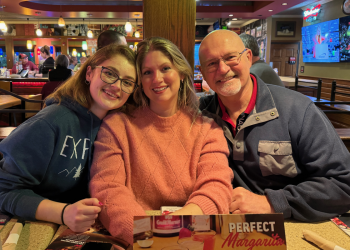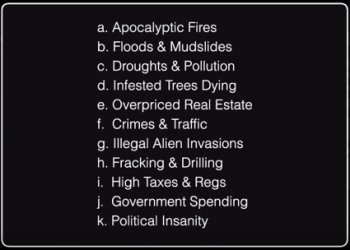Traditional retirement planning is no longer what it once was. Sequim is a major destination for retirees. Many retirees of the past three decades have relied on traditional retirement planning for their dream years in Sequim, but the world has been changing and financial planning is not what it used to be. Traditional retirement advice basically went like this. Work hard for a corporation or the government for 25 to 30 years, and between your employer contributions and your own IRA or 401(k), and with what is left of social security, you should have enough to retire for the rest of your life. This traditional retirement planning is no longer viable.
The future is going to be different than the past, and that is certainly true when it comes to traditional retirement planning. First, having a guaranteed 20 to 30 year career at Boeing or any major corporation today with a retirement plan is virtually impossible. Even Microsoft has gotten away from “employees” and hires “independent contractors” so they don’t have to pay retirement benefits. Working for the Federal government is just about the only guarantee left. But there are even bigger reasons traditional retirement planning is dead.
The Myth of Traditional Retirement
When I retired from 20 years of real estate law practice in 2005, I was recruited by a national investment brokerage. I was told I could make a large six figure income, and since I had always loved investing, I became a registered financial adviser. I went to work on the “inside” of one of the nation’s foremost investment advisory services. I thought I would learn all about investing wisely in the stock market and mutual funds and bonds, and so on. I thought I would be using my years of estate planning, business succession, and asset protection experience to help clients plan and build a nice retirement with traditional retirement concepts. I was wrong, and here’s why.
The investment brokerage I worked for didn’t intend to teach me anything about investing. They wanted salesmen and saleswomen who would make thousands of cold calls and contact everyone in our sphere of influence (including family members), and the whole plan was to get these prospects to turn over all their money to a fund manager on the east coast that none of us knew or would ever talk to. The big money was made by the investment brokerage by collecting a 1.25% fee annually on all funds under management, plus a fee for every time a trade was made. The fund managers used computer models to make investment decisions, and it didn’t matter if clients made money or lost money, because the brokerage made out like a bandit in any kind of market. The average returns for clients were often less then the average index returns.
Traditional Retirement Planning is Dead
Many of my real estate clients who have moved to Sequim over the past six years have shared that their life’s savings, their entire retirement accounts, were down by 30% or 40% and in some cases their investment advisers had lost 70% of their retirement accounts. But it gets worse. Some have lost all of their retirement investments due to fraud or gross incompetence. Many retirees around the country have had to go back to work, and others have had to postpone their retirement. Some retirees are working out of their homes as consultants or building a new business for additional income.
This is not a new problem. In 2008 I wrote about the challenges of traditional retirement planning:
Consider the following companies are just some of the major companies involved in either accounting fraud or corporate fraud of various kinds: Adelphia, AES, Duke Energy, El Paso, Merrill Lynch, Reliant Energy, Rite Aid, Parmalat, AOL Time Warner, Dollar General, PNC Bank, Cendant, Citigroup, Computer Associates, General Electric, ImClone, Peregrin, Xerox, Bristol Myers, HPL, JP Morgan Chase, Kmart, Lucent, MicroStrategy, Network Associates, Tyco, Enron, Global Crossing, Halliburton, Omnimedia, Merck, Qwest, Sunbeam, and there are many more, including major accounting firms and major stock brokerage houses.The losses associated with these companies is in the billions. These are losses suffered by millions of hard working Americans. These losses have nothing to do with a market that turned down. These losses have nothing to do with our economy or investing principles. These are losses people have suffered because of corporate and accounting fraud. Traditional retirement planning should not include fraud, but all of this has happened within the traditional framework.
When I wrote this originally, the date was December of 2008 [See Real Estate or the Stock Market?]. I wrote then that we have the biggest fraud in history exposed by the admission of the prior head of NASDAQ. “The arrest of investment manager Bernard Madoff on charges of running a $50 billion “Ponzi scheme” may be only the beginning of the legal saga involving the Wall Street veteran.” Read Legal Experts See Wide Fallout From Madoff Case. This massive Ponzi scheme has devastated mutual funds and hurt thousands of people. Among those who invested with Madoff: Tremont Capital lost hundreds of millions; Maxam Capital Management has combined losses of $280 million; Fairfield Greenwich Group may have lost $7.3 billions; Fix Asset Management may have lost $400 million; and the list goes on.
What bothered me about what I was taught at the investment brokerage was that we were to tell people they should trust us with all their money and invest for the long run with traditional retirement concepts, even when the market is falling dramatically and they are losing a lot of money. I remember thinking, what kind of financial nonsense is that? Even today, financial advisers are taught to tell you and all their clients that they should just “invest for the long run” while they are losing hundreds of thousands of dollars with every market downturn. In other words, stay on the merry-go-round, or should we call it a roller coaster? As if fraud isn’t bad enough, the traditional investment approach is broken.
In the past six years real estate lost a lot of its value, too, but it didn’t go “poof,” and it didn’t go to zero value because of fraud. It depreciated because of a host of mortgage crises and so on. But what about now? If traditional retirement planning is not so reliable, if it is not guaranteed to provide you with a steady retirement income so long as you live, what should you do?
I do not pretend to give you personal financial advise here. That is far too complicated and requires a lot of close work with your financial adviser. What I do recommend is that you have a financial adviser who is wise and does not take the party line, someone who has the knowledge and experience to give you advice to build a retirement income that will outlast you.
I do believe in investing in stocks and bonds and using tax advantaged investments for retirement, but there is something that I think you should also consider seriously. Your adviser who relies upon traditional retirement planning is not necessarily going to agree with me, but here it is. Real estate is a solid investment if purchased at the right price, and if you purchase single family homes in the right location with the right features. [I do not like REITS or real estate investment funds which would put you right back in the stock market.] Own single family homes in your own name or your own trust. There’s hardly any debate that we are at or near a bottom in real estate prices, and the future is very likely to give single family homes some of the best appreciation you will find in the coming ten years and beyond.
The challenge right now is that in most places, including Sequim and Port Angeles, you cannot buy a single family home with a loan and expect to rent it out with a positive return. But if you have cash to purchase single family homes, you can rent them out for a positive cash return. While that isn’t going to give you a mathematically great return on investment in the short term, it will provide a stable and secure income into retirement and for as long as you live, and I believe single family homes will offer steady appreciation over the next one to two decades. I believe a $300,000 home today will steadily appreciate, and in 10 years could conservatively be worth $500,000. Unlike your mutual funds which gyrate up and down by 10% to 30% in many years, real estate in the next five to 10 years will be far more stable. But the big advantage of owning single family homes is that a Wall Street Fund manager cannot fraudulently steal it from you, and a cheap salesman who works for a national financial advisory service cannot incompetently lose a lot of your hard earned money. If you could afford to buy two or three or four homes like this and rent them to good tenants, your financial future would be very bright and . . . secure.
It is clear that traditional investing in stocks and bonds offers no protection against recessions and small market declines. The way they keep us in the market is by repeating the mantra, “Invest for the long run,” and “the market will come back up.” But history tells us that is not always the case, and I need to add an important caveat to this discussion. Traditional retirement planning offers absolutely no protection against a major economic collapse, i.e. a major depression. If you obey your financial adviser, you are likely to ride the market down, down, down, and further down. At every major drop in the market, financial advisers are telling us not just that we should not sell, but that it is a buying opportunity. In a major economic collapse, there is no bottom, and there are no buying opportunities. You just lose your retirement. I’m reminded of the response of a man who was asked how he went bankrupt who said, “Slowly and first, and then quickly.”
Now look at real estate in the context of a major economic collapse. If you own single family homes free and clear with no mortgage debt, you are in a much much safer place. While some tenants may not be able to pay rent, at least a bank cannot take your assets. Your real estate cannot just disappear on the books of a brokerage on Wall Street. In the current real world, I would consider only 30% of my investments in the stock market and as much as 70% in single family homes as a long term investment. A good argument could be made that one should be out of the stock market entirely right now, and if you are in bonds and interest rates increase, which they will, the value of your bonds will drop significantly. Did you know you can have an IRA that holds your real estate? [There are clearly tax implications to selling stocks or mutual funds and transferring that money into real estate, but the implications of losing 30% to 70% in market losses is far worse.]
Can you really afford to trust your retirement future with some fund manager or adviser on the east coast that you never met and don’t even know? Remember, your local financial adviser who you have known and like is not the person who manages the company funds. That’s someone we never know, and who could be another Madoff. I believe real estate is safer and much more secure as we grow older. This doesn’t mean you should not diversify, because you should, but I would suggest you consider putting more into real estate and less in the risky stock market where there are far too many variables over which you have absolutely no control. I also believe single family homes are the best investment right now, and will likely provide appreciation and income in your retirement as long as you live. You can own real estate, control it, see it, and enjoy the benefits of ownership. I know this is not exactly traditional retirement planning. If I can help you select the best single family homes for your retirement, call or email me. I’d be glad to help, although don’t expect traditional retirement thinking.
Last Updated on September 21, 2019 by Chuck Marunde

































